Simplify, then add lightness. That was the philosophy behind many of Colin Chapman’s more successful designs, both in Formula One and his road cars. Nowhere was this better demonstrated than in his iconic Europa. While the car didn’t feature a large engine, its exceptionally low weight ensured it offered sparkling performance. This 1969 Europa is a blank canvas project. The buyer might choose a faithful restoration, although there are possibilities for them to tackle this as a restomod. If you feel up to the challenge, you will find the Europa located in New Braunfels, Texas, and listed for sale here on Barn Finds Classifieds. You could park this classic Lotus in your workshop by handing the owner a mere $2,000.
Finished in Carnival Red, this Europa would have been an eye-catching classic in its heyday. It needs work to return to its former glory, but it appears that the buyer will be starting the process from a sound foundation. The fiberglass panels feature notable modifications, including an aftermarket sunroof, flared rear fenders, and additional cooling ducts. Reversing most of these changes would be possible, and anybody with a reasonable working knowledge of fiberglass could achieve a respectable finish. Alternatively, leaving most of these items intact could become a practical consideration, depending on which path the buyer follows on this build. One of the known weak points of the Europa was rust in the frame. It was particularly prevalent where the body mounted, but the news is good with this Lotus. It has spent its life in the dry Texas climate, meaning the frame remains structurally sound and features little more than some surface corrosion. It appears that all of the glass is present and while most is in good condition, the windshield is cracked. A few external hardware items are missing, but those that are present should be a restorable proposition. There are no rear wheels, so the buyer will need to trailer this to its new home.
The Europa is a mid-engine sports car, and its engine bay would originally have housed a 1,470cc four-cylinder engine. It’s produced 82hp, which found its way to the road via the rear wheels and a four-speed manual transaxle. With an overall weight of a mere 1,459lbs, this combination would have allowed the Lotus to cover the ¼ mile in 17.4 seconds. This is a case of “what you see is what you get” when you look in the engine bay. The buyer will need to source a new engine and transaxle, which is where the possibilities broaden. Locating original items is not difficult and would be the buyer’s path if a faithful restoration is their goal. However, I have seen a Europa that has been the subject of a restomod build. That owner slotted in an engine and transaxle from a 1984 Toyota MR2. The process was surprisingly simple, and that owner had no trouble gaining engineering certification once the work was complete. These components brought a few notable advantages compared to the original drivetrain. Toyota twin-cam engines tend to be pretty bulletproof, making maintenance a breeze. Fuel injection endows these little motors with civilized manners, while the five-speed transaxle would give the Europa longer legs. The Toyota engine pushes the power output to 122hp in unmodified form as a bonus. That offers a worthwhile improvement in overall performance and should substantially slash the ¼ mile ET. It is not a path that everybody would choose, but it is well worth considering.
Apart from a few components like the steering wheel, this Europa’s interior appears to be essentially complete. Before spending any money inside this classic, I would treat everything to a deep clean. Items like the door trim and console could potentially be salvaged, although the console will require a new lid. If new seat covers have to go on the shopping list, these are readily available in the correct material and color. The same is true of the carpet and most other interior trim items. I get the impression that whipping this interior into shape may take more time than money. However, the result should be worth the effort.
How would you tackle the build if you were to buy this 1969 Lotus Europa? Would you opt for a faithful restoration, or does a restomod build look attractive? This classic would also make an affordable basis for a track-day car. There is a world of possibilities with this Lotus, and the buyer will only be limited by their imagination. Now that I have whetted your appetite, are you tempted to pursue this one further?
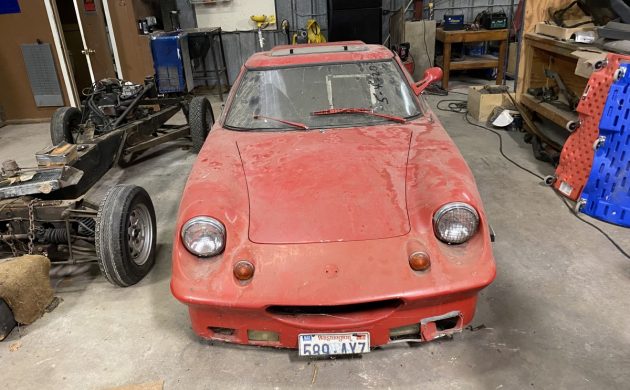
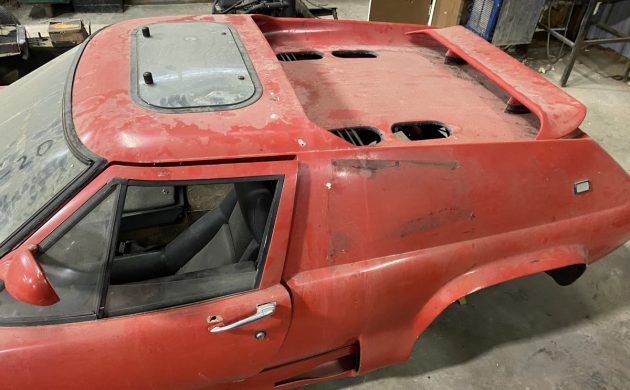
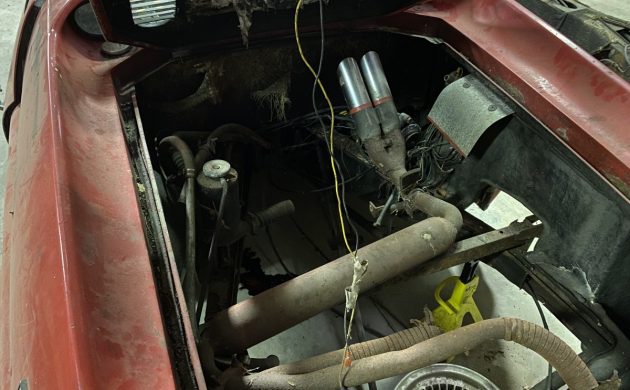
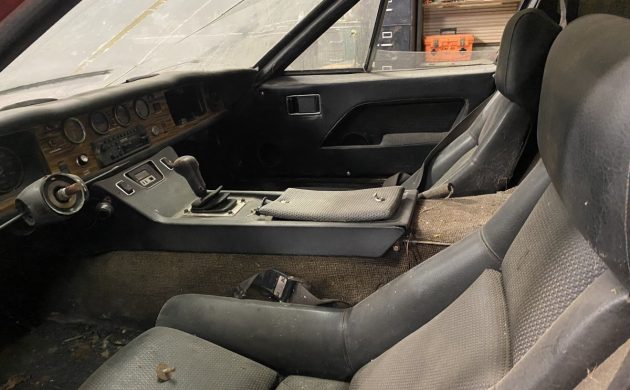
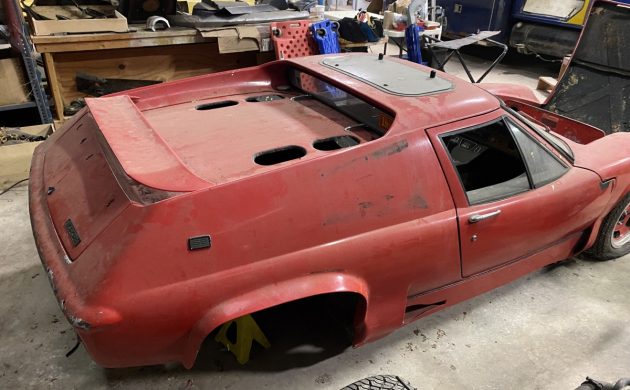

Truly unfortunate……..
Bought a running S2 from a dealer 8 years ago for $2,000. Don’t think the seller has much to sell here for that kind of money.
it would be “extremely” wise to seek guidance from some of the experienced on-line groups on this before committing, unless you might already have access to some of the various missing and/or broken items.
This is a shame. Way too much missing or screwed up by prior owners here. Even with a pocket full of money for a rehab, I see this as a 500 buck shell and nothing more. Very sad.
A serious note if you decide to put in an engine capable of more than 100HP you will need to upgrade the half shafts and rear aluminum rear axel supports the the ones used on the twin cams unless you are interested in seeing what happens when an axel separates as you accelerate away. The half shafts in this design form the top most structural part of the rear suspension and when it breaks very interesting and highly expensive things begin to happen very quickly.
I am in the process of restoring one of the exact same year but if find the the flairs are not necessary as is the rear wing. Mine however came with a chrome luggage rack there and that has over the years been surpassingly useful on many occasions.
I agree that without the engine and the other modifications I would not be interested in purchasing this car for more than $1000. Too much has been changed by someone that saw this as a street racer. Look up a TYPE 47 LOTUS and you will see the differences almost instantly. These changes have much more of a look at me rational than performance.
For those that are interested I am making CAD files of all the major metal clips and other parts for those that might wish to fabricate them in the future. That is taking longer than I expected but the seat frame drawings have already helped more than one Europa owner already.
These are already highly stressed structures and more than minor modifications I can not recommend if you plan on driving this car on the street. Straight line performance and quarter mile time is not the forte of this car but traction, feed back, feel, cornering and braking is. On a twisty piece of road there are very few muscle cars that can keep up and many much newer sports cars and exotics can not either. I have seen more than a few spin out behind me at times when I was not even trying.
Bruce, you are spot on regarding more power for S2s. I put one back together in 1973 that had a half shaft failure from too much power and too much traction. It was quite ugly. Lots of fiberglass pieces!
Number 1 for 2022.
How many Lotuses will be listed on Barn Finds this year in some stage of restoration or repair? This makes me wonder why people pick Lotus vehicles to disassemble and then realize what? No available parts, price of parts, knowledge of assembly or curiosity.
FWIW – parts availability is not a big issue other than some Renault-based parts used in the early Europas (like this one). Twincam parts are readily available as this engine was used in Elans and Sevens as well as other kit cars (Ginetta for example) A lot of the Elans, Sevens, and Europa parts are “bins bits” from other Brit cars of the era (Spitfire for example). The cars are simple and straightforward, but EVERY car restoration project is bigger than anyone thinks at the beginning. I’ve been though multiple… Just finishing up an S2 Europa now.
I avoid the 907 engine cars.
YMMV
Lotus is picked for performance, specifically handling. Not much touches them in this regard. Have a look at Lotus Elans racing on Youtube chopping down much larger, more expensive and more powerful vehicles.
They are extremely light, somewhat fragile, but potent cars. Expect to maintain them for those reasons.
As a note that is a Europa chassis with engine next to this body shell. Does that come with this car or is this just the body and chassis and all the screwed up parts in combination of two cars that the owner wishes to pass on to some one that does not have enough problems already.
To me, just far enough gone, missing enough rather important bits to qualify it as yard art at best.
I sold my 70 S2 in a bit better condition this past summer for $600 and it took 6 months to find that buyer.
The OP called it a “blank slate”. I’d call it more of a dropped and broken slate.
I had a 69 myself many years ago, this is missing a lot, and many not stock parts, way over priced!!
Owned a 73 twin cam for a bit, like a previous post said these cars handle. That’s their forte. If Straight line is what you want go buy a GTO or Etc. It took a long time for another car to beat the R&T skid pad test. Cutting in the sun roof to me is a big no no. Structural integrity is compromised. Have seen this done on a number of these and I shake my head every time. Unless you are completely crazy or stupid you run out of guts before you run out of handling.